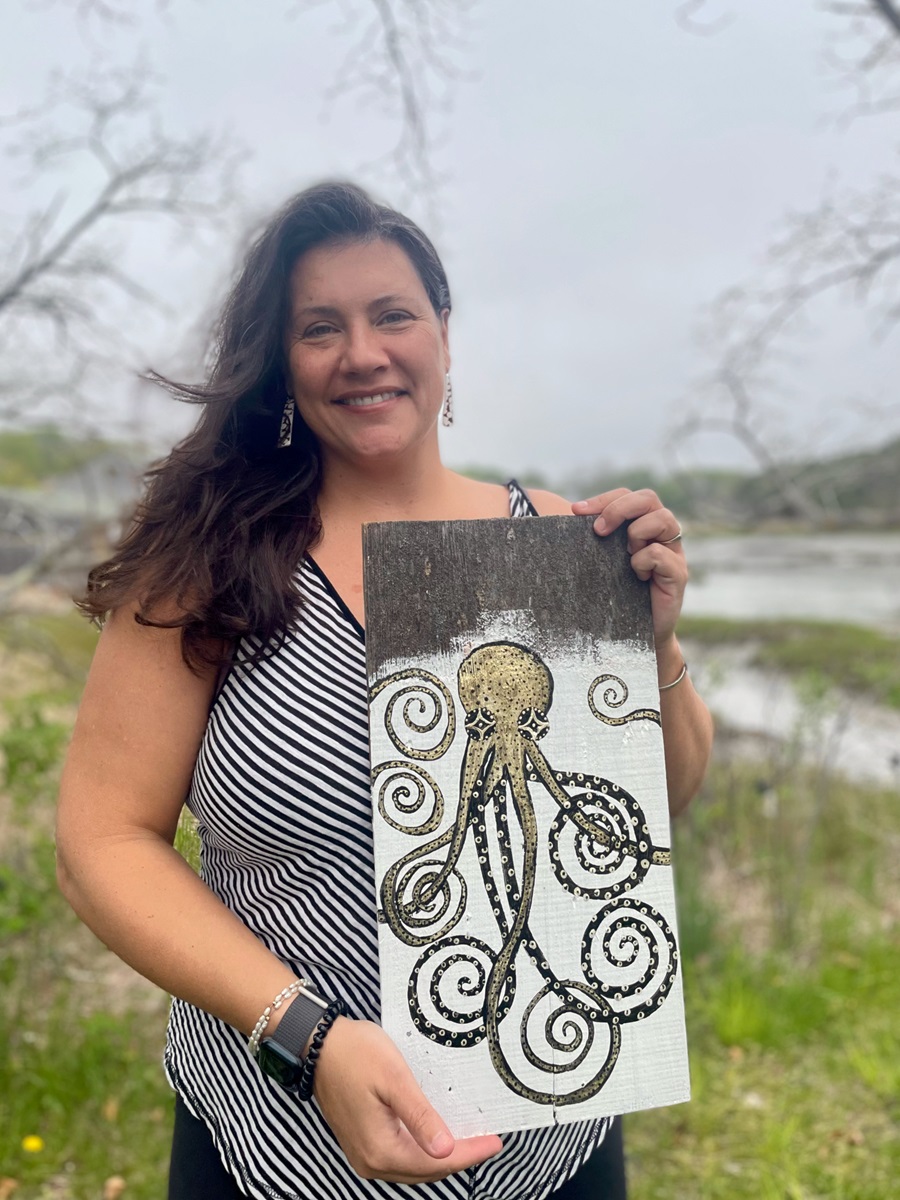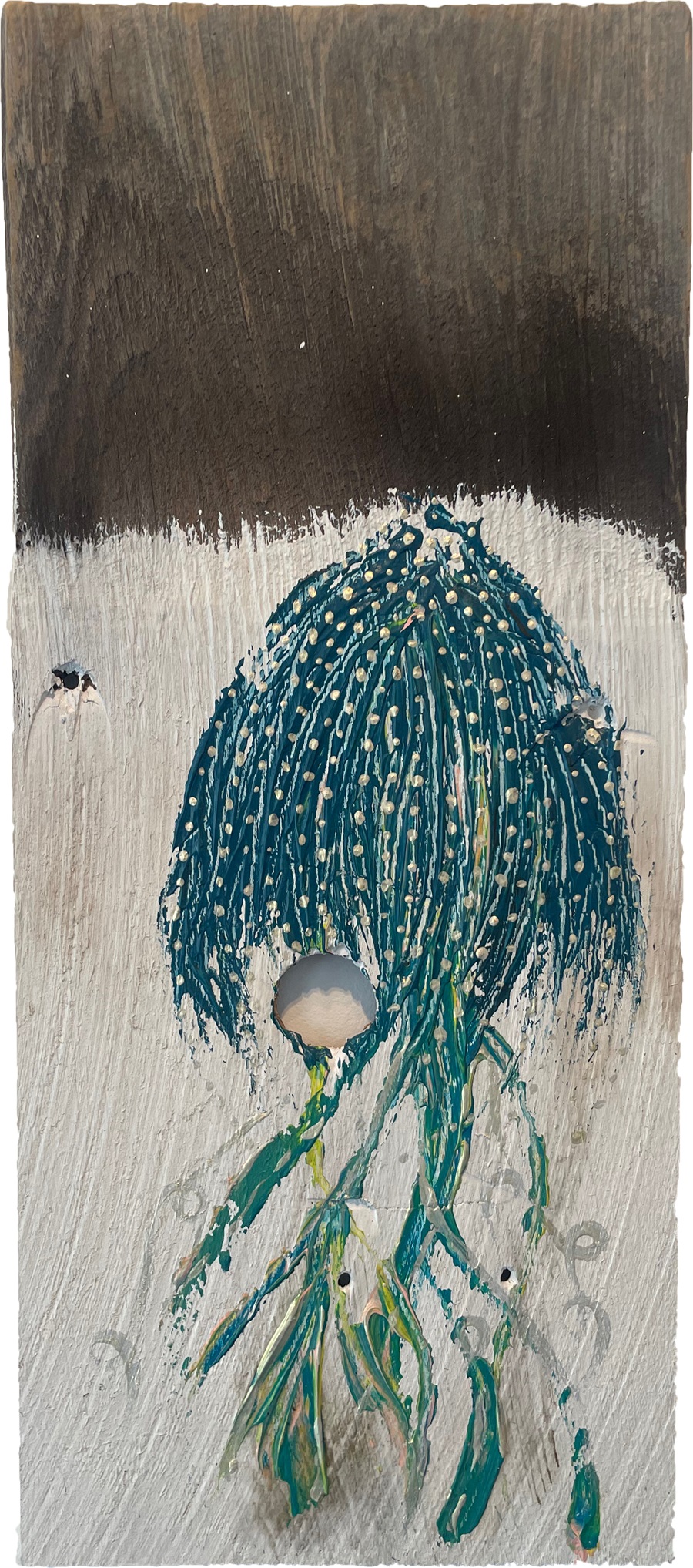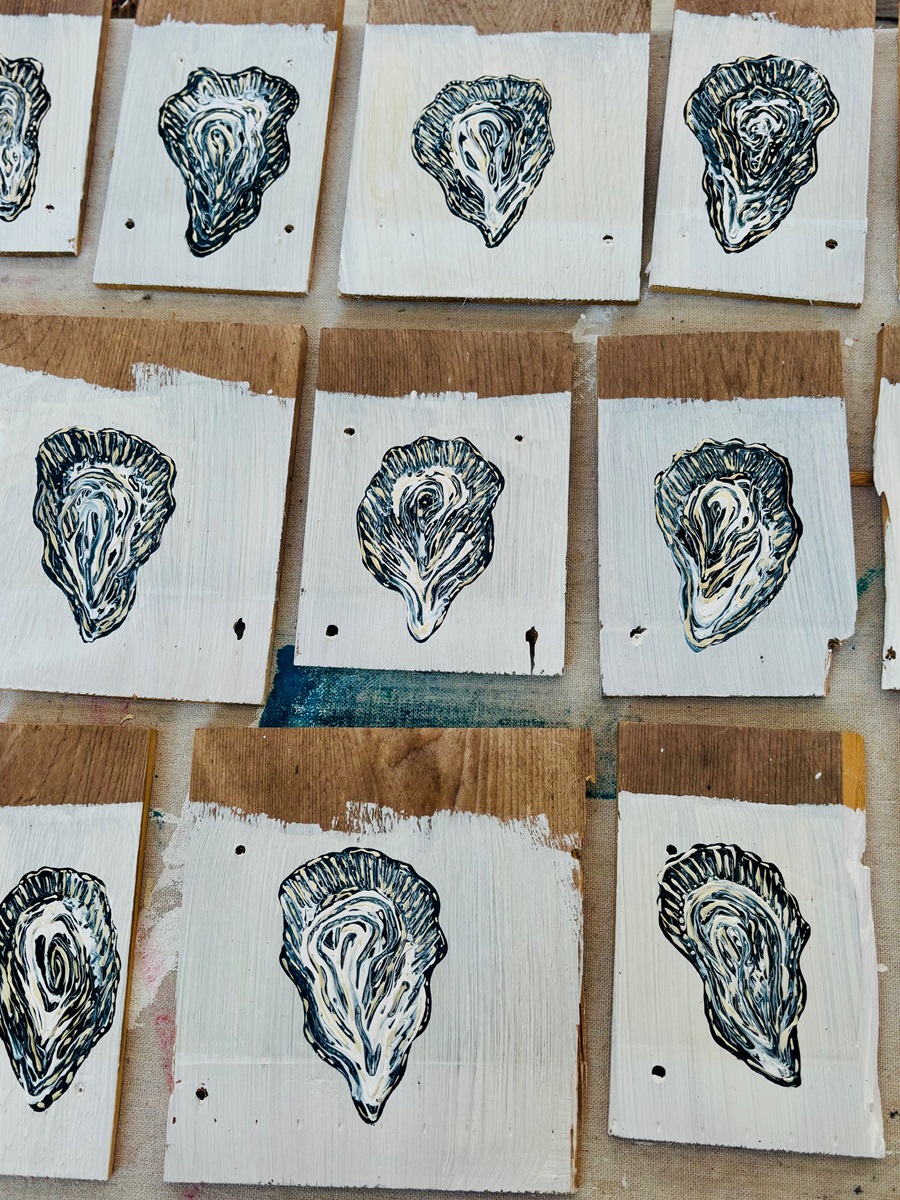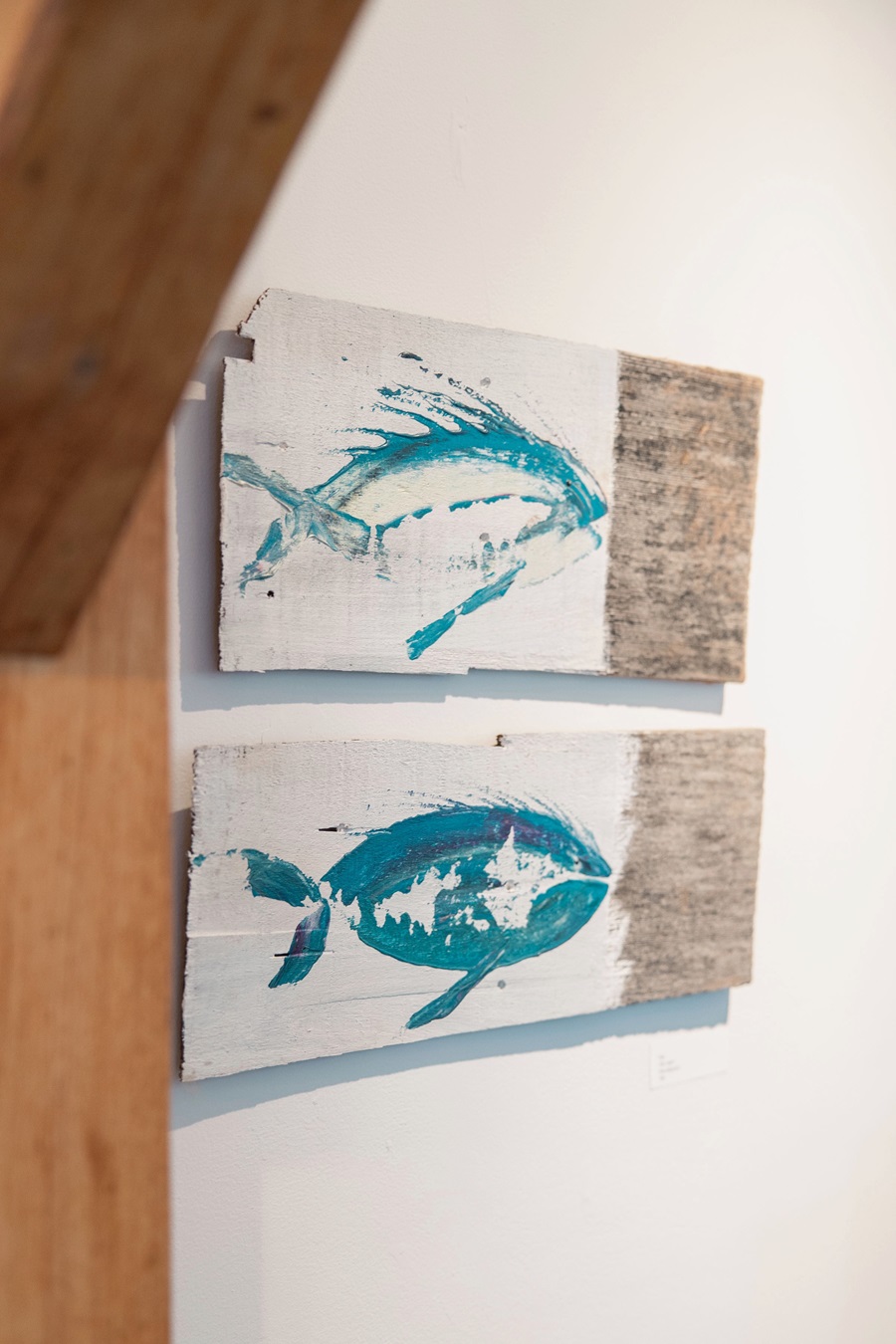In her small, bright shop on Wellfleet’s Commercial Street, Nicole Gelinas holds up two thin pieces of wood: old shingles from Cape Cod houses. On one, a gold-and-black octopus sports dotted tentacles that spiral out to the edges of the wood; on the other, a jellyfish drifts in shades of blue and green. Other coastal species fill the shop: sharks on cloth napkins, palm trees on stickers, fish and crabs on compressed birch platters big and small.

Gelinas grew up in Fitchburg and visited Orleans with her family every summer. What she loved most about it here was the ocean. As a child, she played in the calm summer surf. Since moving to Truro in 2013, she’s become a winter swimmer.
The idea for the shop, which is called Shinglefish, took shape in 2018, when Gelinas was running an online coaching business for women entrepreneurs. Learning new things was always a theme, she says, and “we would talk a lot about how to bring play into your business.”
She finally listened to her own advice. “Maybe I’ll start painting,” Gelinas remembers thinking. Her idea was very specific: she pictured painting on old cedar shingles. She began collecting them: her first batch came from the side of a friend’s recently redone house in Wellfleet. After taking the nails out and cleaning off most of the dirt, Gelinas had a bag full. On each, she squirted acrylic paint and, using a palette knife, mixed colors and created a fish-like shape. Those first paintings “were very abstract” renditions of fish, Gelinas says. “They didn’t really even have eyeballs.”
The fact that she had never studied art was a kind of advantage when it came to pursuing this craft. Gelinas felt no pressure to achieve perfection, she says. Those early fish “left room for your imagination,” and people seemed to like that.

When she was invited by Truro Vineyards owner Kristen Roberts to sell her work at the Vinegrass Music Festival, she started painting in earnest, finishing “the Vinegrass 100” in time for the event. She sold about 25 pieces, and Shinglefish was born. Last spring, she opened her store in Wellfleet, and her designs now decorate a variety of items there: serving trays, tea towels, coasters.
But Gelinas still likes painting on old shingles best. She likes the idea of giving a piece of construction trash new life. Taken off a house, a shingle is two-toned: the weathered end is dark brown, while the protected part is still bright and clean.

She usually paints the unweathered end of the shingle white. But “seeing the weathered part of the shingle is charming,” says Gelinas. Dried lichen adorns some pieces, while swirling patterns emerge from the wood on others. Some pieces have holes and cracks in them. Those faults become unique features. “I’ve become such a shingle nerd,” she says.
Besides painting fish, Gelinas has added jellyfish to her repertoire, also done with a palette knife. And on shorter shingles, like those taken from under windowsills, she paints oysters with intricate stripes and folds. Then there are the octopuses. When she began making these, she added paintbrushes and toothpicks to her tool kit so that she could paint smaller details of the tentacles.

“The octopuses are my favorite things to make right now,” Gelinas says. Often, an octopus’s tentacles reach beyond the edges of its shingle background. “I don’t try to keep it all on there,” she says.
Over the years, Gelinas’s technique has evolved. Wellfleet artist Traci Harmon-Hay taught her how to paint simple eyeballs on her fish — “a little circle with a fleck of white on top,” Gelinas says. But a sense of childlike freedom has never left her work. Her creatures are done in colors from turquoise to champagne gold. Hot pink and other fluorescents might be in her future, she says.

Gelinas has listened more than once to Ingrid Fetell Lee’s 2018 Ted Talk on where joy hides and how to find it. In the talk, Lee describes a research project in which she asked a group of people about the small things that made them happy. “They came up with colorful things, things with levity,” says Gelinas. “We’re talking about confetti, sprinkles, hot air balloons, clouds.
“In my paintings, you’ll see a lot of dots and circles,” she says. And against their white backgrounds, “the creatures are floating. They’re not grounded by anything.”
Gelinas remembers attempting to paint a real fish, a bass, in the first days of her project. “It was a disaster,” she says. “I was not having fun.” It feels right that the fish are from her imagination. Still, people often ask about their species, Gelinas says. “I just tell them it’s a shinglefish.”
